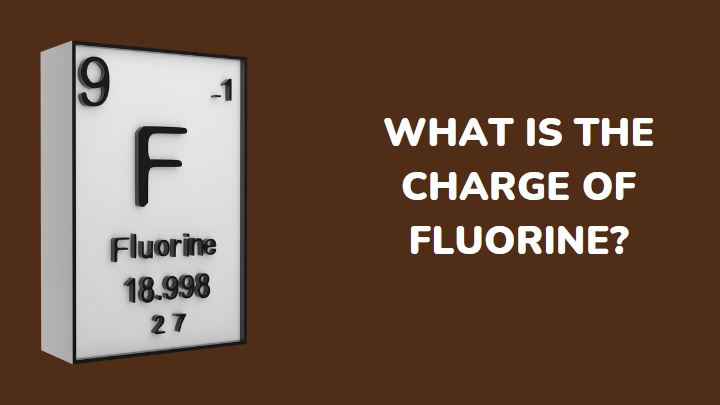The halogen elements are a special kind. They are very reactive because their valence shell needs just one more electron to complete its octet structure. They easily bind to metals like sodium to form salts.
When halogen elements gain one more electron, they get a negative charge. This article looks at the first and lightest of the halogen family, fluorine.
If you always wanted to know the charge of fluorine as an ion by itself or in combination with other elements, you should continue reading.
Properties of fluorine
- Fluorine is the ninth element of the periodic table with atomic number 9 and mass number 18.9
- Fluorine is located in group 17 (VIIA) and period 2
- It is the lightest halogen element with a pale yellow color when it is in its gaseous state at room temperature
- Fluorine has an electronic configuration of 1s22s22p5
- Fluorine is highly electronegative and oxidizing but it forms weak acids
- Also, fluorine is one of the few elements that can form diatomic molecules
- It has a melting point of −363.32°F (−219.62°C) and a boiling point of −306 °F (−188°C)
What is the charge of fluorine?
The charge of fluorine is -1. It gains only one electron to complete the electrons in its outermost shell. Unlike some elements of the periodic table, fluorine exhibits only one charge.
What is the charge of F in NaF?
The charge of F in NaF, sodium fluoride, is -1
1 + F = 0
F = -1
What is the charge of F in OF2?
The charge of F in OF2, oxygen difluoride is -1. In this compound, because of the electronegativity of fluorine, oxygen has a +2 charge.
2 + 2F = 0
2F = -2
F = -1
What is the charge of F in NF3?
The charge of F in NF3 (nitrogen trifluoride) is -1. Nitrogen has an oxidation number of+3.
3 + 3F = 0
3 = -3F
F = -1
What is the effective nuclear charge of fluorine?
The effective nuclear charge of fluorine is -1. The effective nuclear charge of any element is equal to its core charge.
FAQs
Is fluorine an anion or a cation?
Fluorine is an anion. It forms a negatively charged ion because it must gain one more electron to complete its octet structure.
What elements does fluorine readily react with?
Fluorine is very reactive and readily forms compounds with a wide range of elements. Fluorine reacts with metals, nonmetals, and even noble gases.
In addition, it is very reactive in its gaseous form such that it can burn water, glass, and metal.
Can fluorine be a positively charged ion?
Fluorine naturally has a -1 charge. However, in very rare cases, it may have a +1 charge. This is very rare and almost negligible. It is sufficient to say that fluorine will always form an anion.
Conclusion
Fluorine is one of those elements that exhibit only one charge regardless of the reaction it participates in. As a halogen element, fluorine is very reactive and highly electronegative.
Because fluorine needs only one electron to form an octet structure, it has a -1 charge. Therefore, it can only form a single bond.
Thanks for reading.
Visit Gezro for more insightful guides like this.
